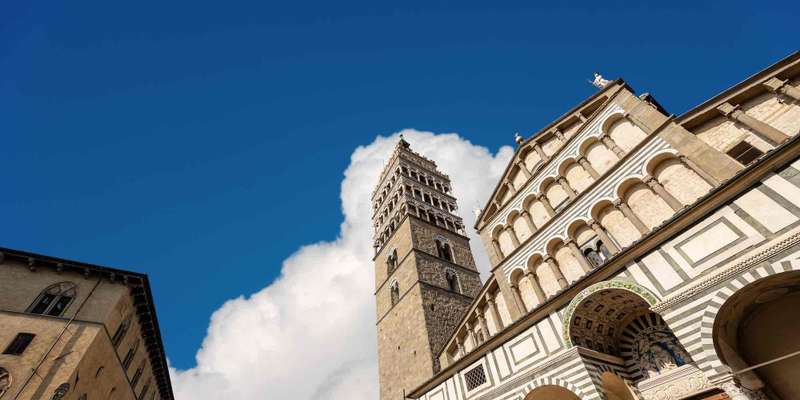- Home
- Useful Tips
- Pistoia's textile traditions:...
Many travelers to Tuscany miss Pistoia's vibrant textile traditions, unaware they're passing within miles of generations-old workshops creating masterpieces. Recent surveys show 68% of visitors leave Italy regretting they didn't bring home authentic local crafts, often settling for mass-produced souvenirs instead. The challenge lies in finding genuine artisans amidst tourist areas, knowing when workshops are open, and understanding which traditions are truly unique to this medieval city. Without local knowledge, you might wander past unmarked botteghe where third-generation weavers create fabrics using Renaissance techniques, or arrive at demonstration days just after they've ended. This disconnect between traveler interest and access points leaves many missing what guidebooks call 'Tuscany's living textile museum' - a network of family-run ateliers preserving skills dating back to Pistoia's 13th-century wool guilds.


Finding authentic textile workshops off the beaten path
Pistoia's true textile magic hides in unassuming botteghe scattered through the historic center's side streets, where the rhythmic clatter of wooden looms still echoes. Start near Piazza della Sala, where the Cappelli family has operated their silk-weaving studio since 1923 - look for the faded green door with a brass shuttle insignia. Most workshops welcome respectful visitors during morning hours (9-12), especially on weekdays when tourist traffic is lighter. At Laboratorio Giuditta Brozetti, you can watch master weavers recreate medieval patterns using natural dyes like walnut husks and elderberries, with explanations in basic English. For a deeper dive, time your visit with the monthly 'Artigiani Aperti' initiative when normally closed studios display their processes. Remember that these are working spaces, not attractions - purchasing even small items like ribbon bookmarks helps sustain these vanishing crafts.
Must-see textile demonstrations and seasonal events
Pistoia's textile calendar offers year-round opportunities to witness extraordinary craftsmanship. From June to September, the courtyard of Palazzo dei Vescovi hosts 'Trame di Storia' (Weaves of History), where artisans demonstrate everything from gold-thread embroidery to natural dye preparation. The September Wool Festival transforms Piazza del Duomo into a living museum, with carders, spinners, and weavers working as they would have in medieval times. For an intimate experience, visit during Easter week when local workshops create special liturgical textiles displayed in churches. The Textile Museum at Palazzo Rospigliosi runs monthly hands-on workshops (reservations essential) where you can try basic weaving under guidance. Check the tourist office for last-minute additions - many small demonstrations aren't widely advertised but are treasure troves for craft enthusiasts. These events solve the common frustration of arriving in town only to find workshops closed or demonstrations canceled.
How to identify truly local textiles vs imported imitations
With souvenir shops overflowing with 'authentic Italian textiles,' discerning genuine Pistoia craftsmanship requires a trained eye. Authentic local pieces will bear the 'Artigianato Pistoiese' hologram sticker, a certification granted only to verified artisans. Look for irregularities in weaving - machine-made imports have perfect uniformity, while handloom fabrics show slight variations. Traditional Pistoia patterns feature the 'pistocchi' (pine cone) motif or medieval heraldic designs in colors derived from local plants. The Textile Museum offers free authentication services on Fridays - bring potential purchases for expert evaluation. For guaranteed authenticity, purchase directly from workshops like Tessitura Pistoiese or Arazzeria Michelucci, where you can watch your item being made. Many artisans provide certificates of authenticity with detailed information about materials and techniques. This knowledge prevents the all-too-common disappointment of discovering your 'handmade Italian textile' was mass-produced overseas.
Staying near Pistoia's textile district with artisan perks
Choosing accommodation in the San Bartolomeo district positions you steps from Pistoia's textile heartbeat. Several historic residences like Palazzo 42 offer exclusive after-hours access to nearby workshops for guests. The family-run B&B Le Tessiture includes a complimentary textile map marking active studios and their open hours. For longer stays, consider an agriturismo like Podere Conca, where you can join seasonal wool processing from sheep to shawl. Many local hotels partner with artisans to provide guest discounts - always inquire about 'sconti per artigianato' when booking. The strategic location means you can visit workshops during their quiet morning hours, then return to see finished products in the afternoon. Some hosts will even arrange private demonstrations if notified in advance. This approach solves the logistical challenge of fitting textile experiences into tight travel schedules while supporting the local creative economy.
